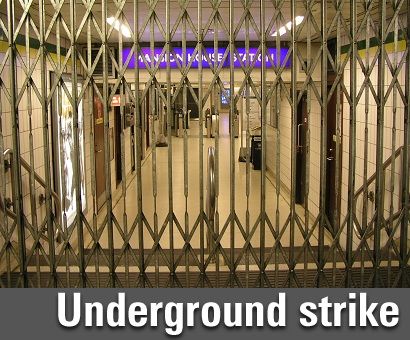MANY London Underground stations were closed on 9 January -- particularly in central London -- because of a 24-hour strike by station staff.
Transport for London said at least 60 per cent of the system's stations remained open, and that services ran on most lines, although there were no trains on the Victoria or Waterloo & City.
The action, which continued until 18.00, went ahead after last-minute talks between London Underground, the RMT and TSSA had broken down.
The unions are protesting at cuts in station staff, especially the closure of nearly all ticket offices.
London Underground says most journeys are now made using Oyster cards or paper Travelcards, and that only 3 per cent of Underground journeys are still paid for in cash at the time, but it has conceded that the cuts were too extreme.
Chief operating officer Steve Griffiths said: "We have hundreds of Travel Ambassadors on hand to help keep customers informed. This strike, called by the leadership of the RMT and TSSA unions is unnecessary. We had always intended to review staffing levels and have had constructive discussions with the unions. We agree that we need more staff in our stations and have already started to recruit 200 extra staff and this is likely to increase further as we work through the other areas that need to be addressed. Taking into account existing vacancies and natural turnover this means that over 600 staff will be recruited for stations this year. There will also be increased opportunities for promotion.
"All of this will ensure that our customers feel safe, fully supported and able to access the right assistance in our stations at all times. We encourage the unions to continue working with us on this process and the only way to resolve this dispute is to keep talking about how to improve our stations."
However, RMT general secretary Mick Cash accused TfL of minimising the effects of the walkouts.
He said: "It does no one any favours for TFL to openly lie about how many Tube services are running. It just piles more people into stations that are already dangerously over crowded and ramps up the risk of a major crushing incident.
"TFL should stop peddling their fantasy world of services that are operating when the truth is that London is on an almost total shutdown.
"They should cut out this lethal nonsense and get their top London Undergound bosses back round the negotiating table with a serious set of proposals to settle this dispute."
The worst effects of the strike were in Zone 1, but there were also some closures in suburban areas.
Alternative services such as the DLR were very busy, although 150 extra buses went into service, and passengers were advised to walk if possible.


